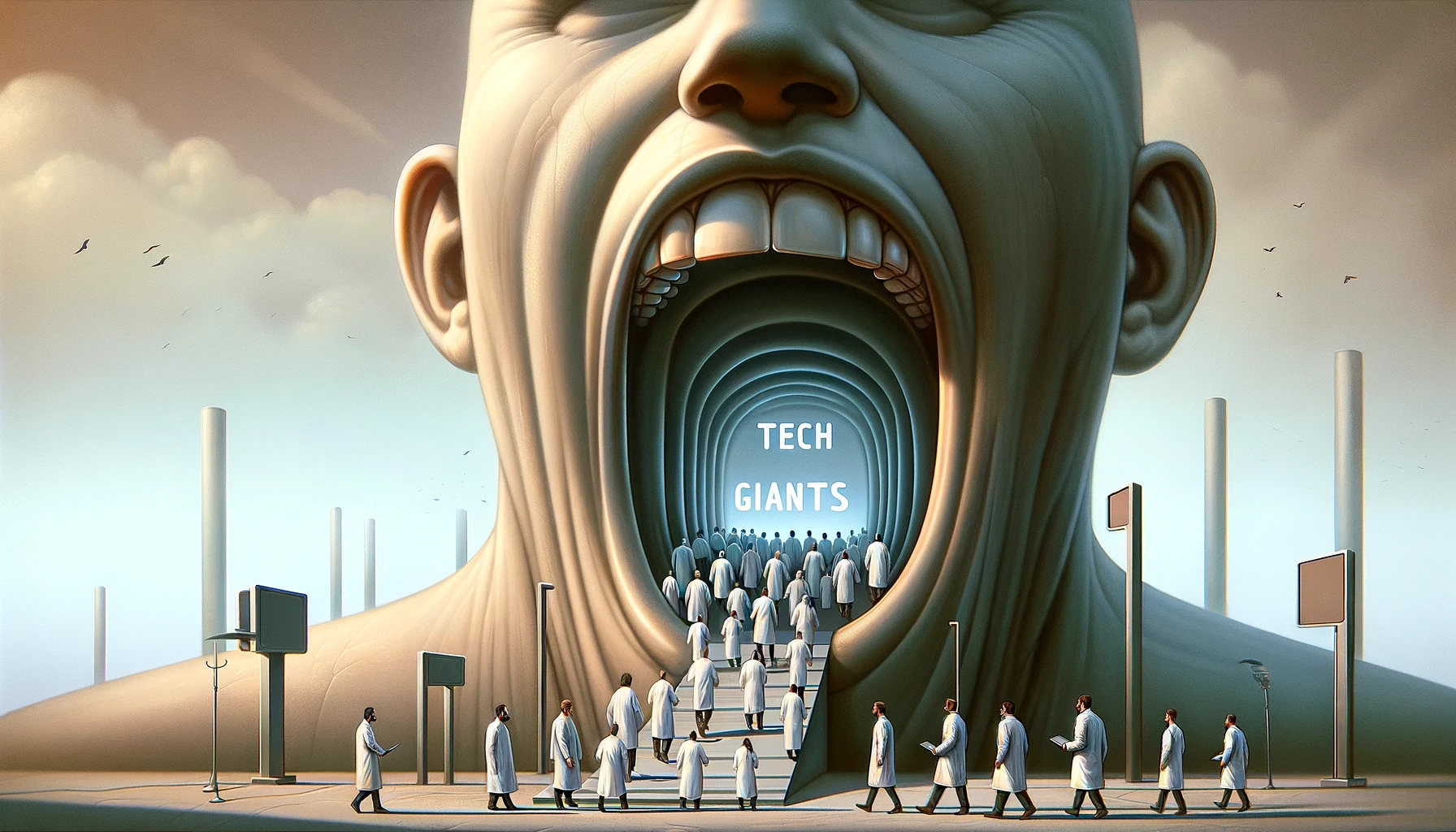In the grand ballroom of San Francisco’s Fairmont Hotel last June, Fei-Fei Li, often referred to as the “godmother of artificial intelligence,” made an impassioned request to President Joe Biden. As a respected Stanford professor, she highlighted the critical need for a national repository of computing power and datasets. This ambitious proposal was aimed at equipping America’s leading AI researchers with the necessary tools to compete with major technology corporations.
Li’s proposal gained further attention during President Biden’s State of the Union address, which she attended as a special guest. Her presence underscored the importance of her mission: to secure funding for a national AI resource that could democratize access to cutting-edge research tools.
The push for such a resource is driven by a concerning trend: the escalating costs associated with AI research are increasingly sidelining independent researchers and academic institutions. Giants in the tech industry, such as Meta, Google, and Microsoft, are investing billions into AI, creating a significant disparity in resources. For instance, while Meta plans to acquire 350,000 specialized computer chips for AI research, Stanford’s Natural Language Processing Group operates with a mere 68.
This imbalance not only affects resource allocation but also leads to a brain drain in academia, with top talent being lured away by lucrative tech industry salaries. The consequence is a shift in the locus of AI breakthroughs from academia to industry. In 2022, tech companies were responsible for 32 significant machine learning models, compared to just three from academic circles—a stark contrast to the scenario in 2014.
Fei-Fei Li warns of the broader implications of this shift. When the industry, driven by profit motives, dominates AI development, the public sector’s ability to pursue research for the greater good is compromised. This concern is echoed by others in the field, who note that the industry’s influence can subtly steer academic research towards commercially viable projects.

Efforts are underway to address this imbalance. Li has actively engaged with political and scientific leaders in Washington, D.C., advocating for increased public investment in AI research. Significant contributions, such as Microsoft’s $20 million in computing credits to the National AI Research Resource, highlight the tech industry’s role in supporting academic research.
Policymakers are also responding. The National Science Foundation’s $140 million investment to establish National AI Research Institutes and proposed legislation like the Create AI Act, which aims to “democratize AI,” are steps toward leveling the playing field. However, the urgency of these measures is underscored by the rapid pace of technological advancements and the competitive recruitment practices of tech giants.
The allure of working on cutting-edge AI projects in the private sector has significantly impacted academia, with a majority of AI PhD graduates now opting for industry positions. This trend is further fueled by the high salaries and substantial research budgets offered by tech companies.
Collaborations between academia and industry, while beneficial in terms of resources, also raise questions about the independence of academic research. The involvement of industry in academic projects can lead to potential conflicts of interest, as corporate sponsors may have specific agendas that influence the direction of research.
Despite these challenges, there remains a strong case for collaboration between the private sector and universities. Google, for instance, emphasizes the mutual benefits of such partnerships, with a commitment to publishing research for the wider community’s benefit.
However, as the field of AI continues to evolve, the disparity in resources and the shifting dynamics between academia and industry pose significant challenges. The need for a balanced approach that fosters innovation while ensuring ethical considerations and the public interest is paramount.
This article is based on the following article:
https://www.washingtonpost.com/technology/2024/03/10/big-tech-companies-ai-research/

Background Information
Understanding these key points provides a solid foundation for grasping the challenges and solutions presented in the article. It highlights the importance of balancing the scales between the industry’s profit-driven research and academia’s focus on public good, ensuring a future where AI technology advances in a manner that is beneficial and accessible to all.
1. What is Artificial Intelligence (AI)?
Artificial Intelligence (AI) refers to the simulation of human intelligence in machines that are programmed to think and learn like humans. The term can also apply to any machine that exhibits traits associated with a human mind, such as learning and problem-solving.
2. Importance of AI
AI technology has the potential to revolutionize nearly every aspect of life, including healthcare, education, transportation, and more. It can solve complex problems quickly and can perform tasks without human intervention, making it a critical area of development for the future.
3. The Role of Big Tech Companies
Companies like Google, Meta (formerly Facebook), and Microsoft are leading the AI revolution, investing billions of dollars into research and development. These corporations have the financial resources to build advanced AI models and attract top talent from around the world.
4. Academia vs. Industry
Traditionally, universities have been the cradle of groundbreaking research in various fields, including AI. However, the high costs associated with AI research and the lucrative salaries offered by tech companies have led to a talent drain from academia to industry. This shift has created a gap between the resources and capabilities of academic institutions and those of big tech companies.
5. GPUs and Computing Power
Graphics Processing Units (GPUs) are crucial for AI research because they can process multiple pieces of data simultaneously, making them ideal for running complex AI algorithms. Access to GPUs and overall computing power is a significant factor in the ability to conduct AI research.
6. The Public vs. Private Sector in AI Development
The private sector (tech companies) often focuses on developing AI technologies that can generate profit. In contrast, the public sector (academic and government research) tends to focus on foundational research and innovations that serve the public good, addressing ethical, social, and safety implications of AI.
7. The Need for National AI Infrastructure
The article discusses the proposal for a national warehouse of computing power and data sets to support AI research. This initiative aims to democratize access to the necessary resources for AI research, allowing academics to compete more effectively with private industry and ensuring that AI developments benefit society as a whole.

Suggested Debate/Essay Questions
- Should There Be More Government Intervention in AI Research to Ensure Public Good Over Profit?
- Does the Brain Drain from Academia to Industry Harm AI Innovation and Ethical Standards?
- How Can Ethical AI Development Be Ensured in an Environment Dominated by Tech Corporations?
- Is the Proposal for the Create AI Act and Similar Legislative Measures Adequate to Address the Challenges Faced by AI Research in Academia?
Please subscribe to Insight Fortnight, our biweekly newsletter!
